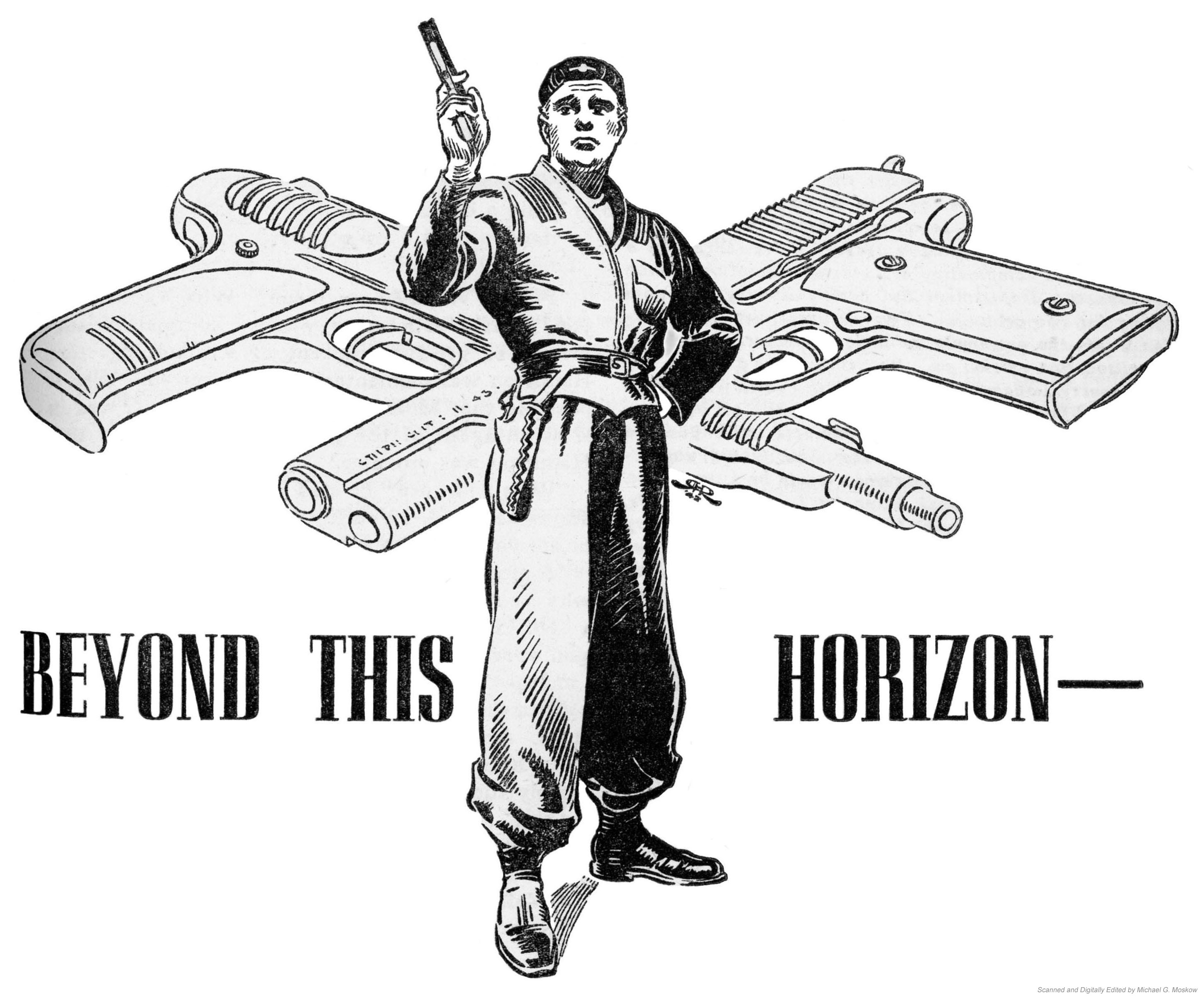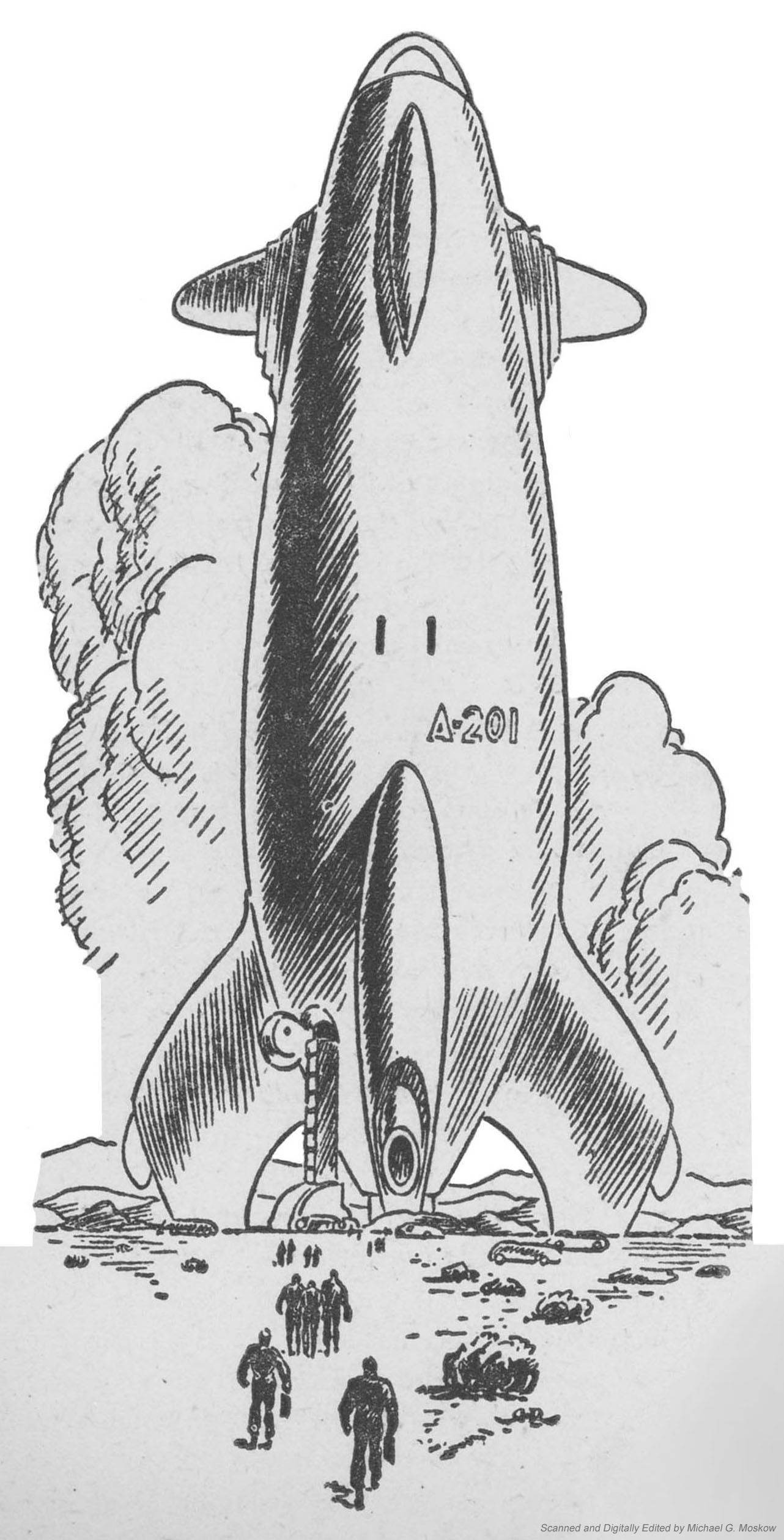“Asylum”, which is anthologized in Isaac Asimov Presents The Great SF Stories 4 (1942) (published in 1980) (one of three stories by A.E. van Vogt appearing in that volume), has qualities typical of van Vogt’s writing: Transitions between events and settings that are sometimes dreamlike – abrupt – in nature; an air of calibrated grandiosity in terms of theme and plot; a writing style generally placing vastly less emphasis on “hard science” than on the mental states and thoughts of characters.
“Asylum” artfully, powerfully, and very effectively combines such disparate themes and concepts as super-normal (if not transcendent) intelligence, multiple identities / personalities (prefiguring a central theme of the late Philip K. Dick), and, the vampire myth.
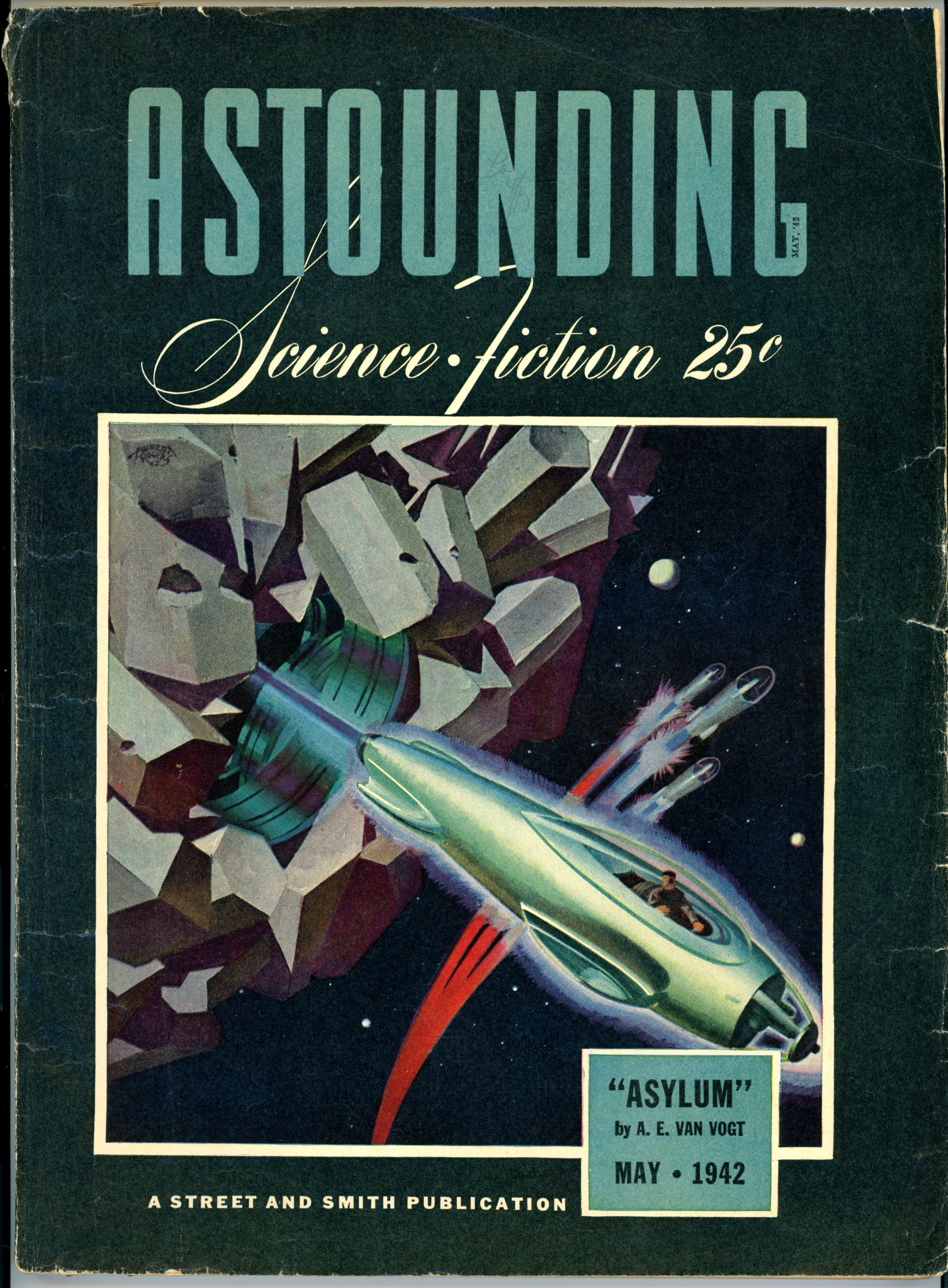
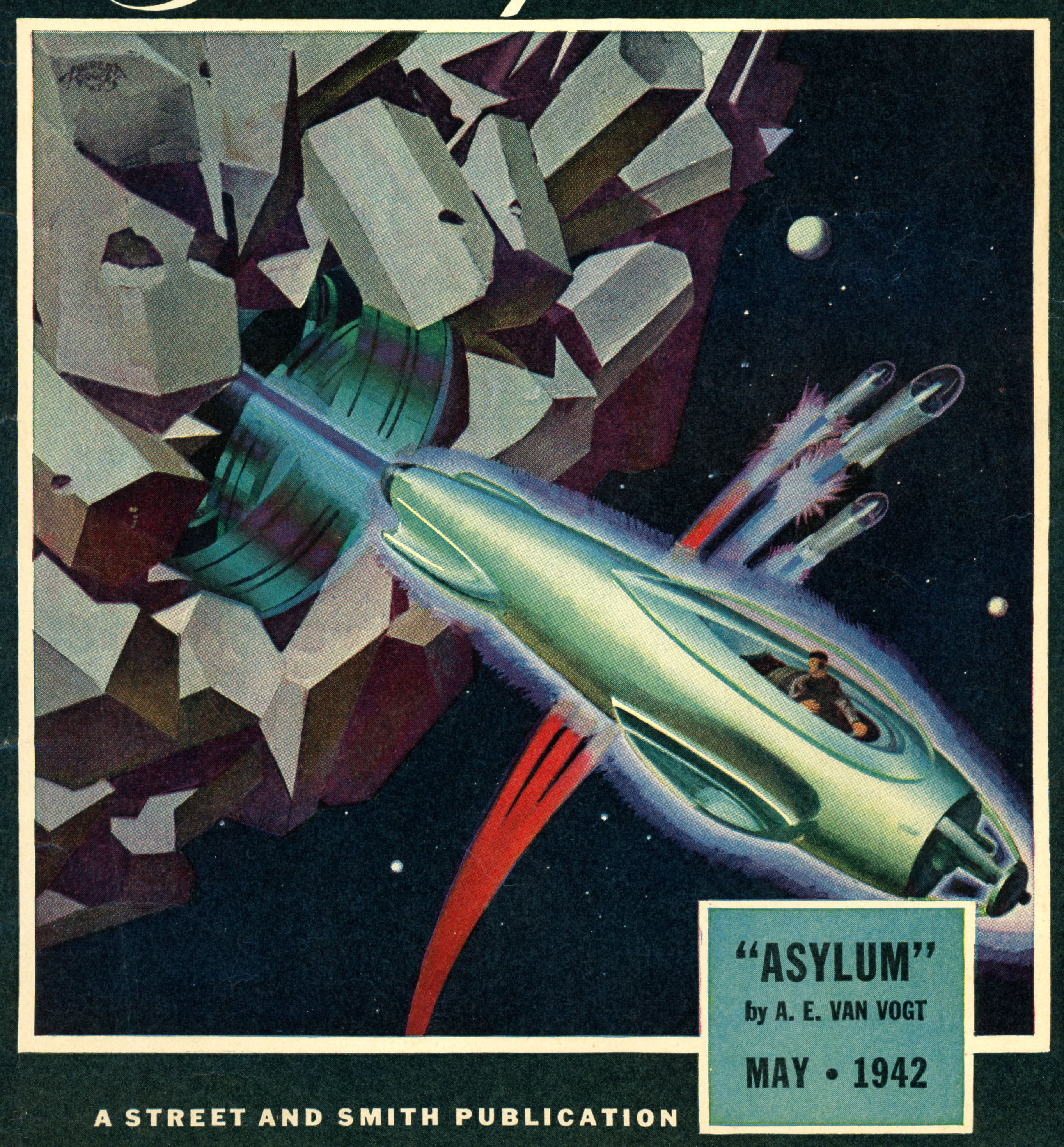 ______________________________
______________________________
Illustration by Charles Schneeman, for A.E. van Vogt’s story “Asylum” (p. 8)
 ______________________________
______________________________
Illustration by Charles Schneeman, for A.E. van Vogt’s story “Asylum” (p. 14)
 ______________________________
______________________________
Illustration by Charles Schneeman, for A.E. van Vogt’s story “Asylum” (p. 19)
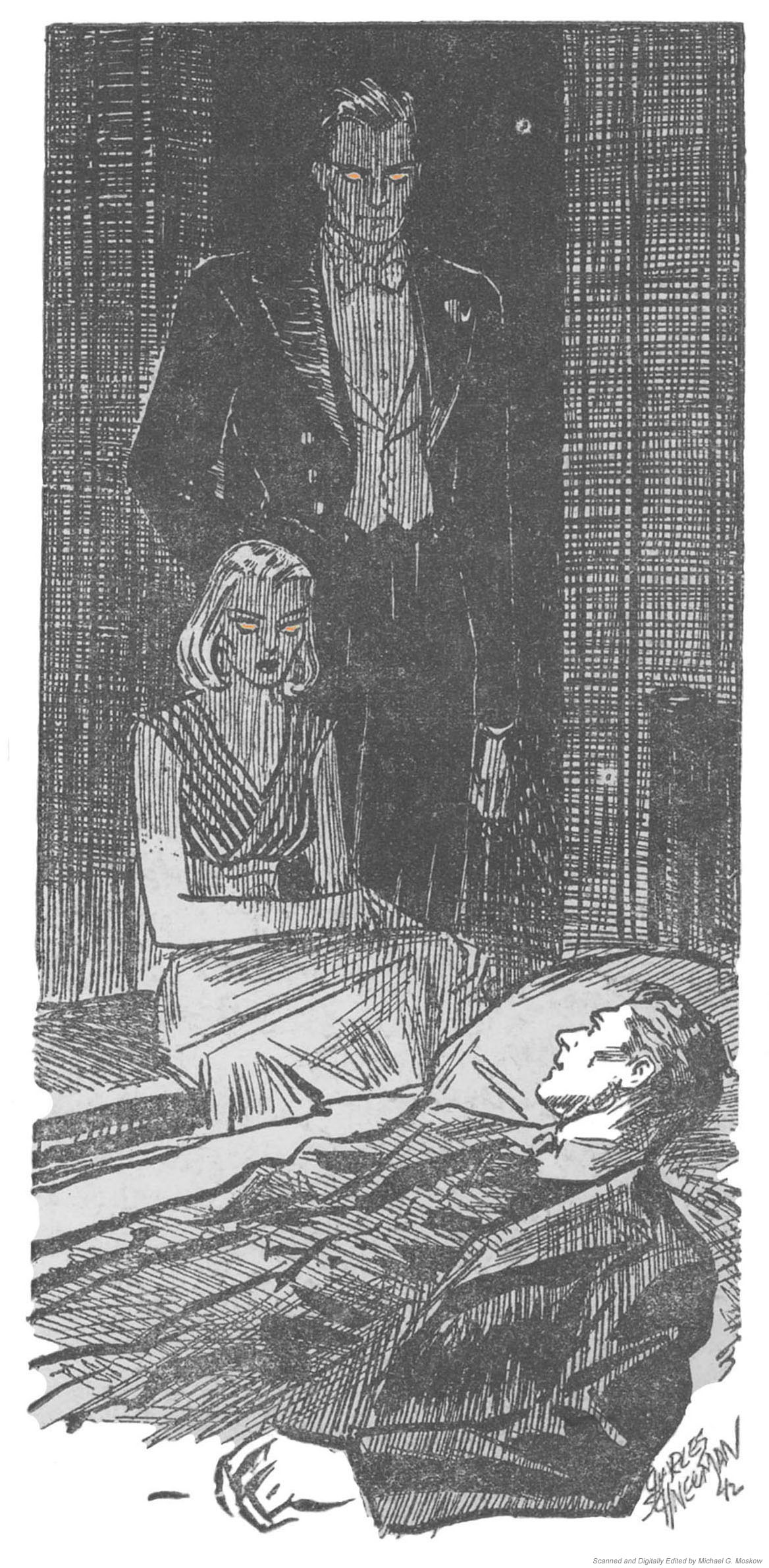 ______________________________
______________________________
Illustration by Charles Schneeman, for A.E. van Vogt’s story “Asylum” (p. 28)
 ______________________________
______________________________
Illustration by Hubert Rogers, for Robert A. Heinlein’s (as Anson MacDonald) story “Beyond This Horizon -” (p. 55)
Technology of the present; technology of an imagined future: A juxtaposition of a Colt M1911 .45 pistol and a futuristic pistol, the latter distinguished by its somewhat streamlined shape and two sets of “fins” – purely ornamental? – for cooling? – along the body and barrel.
Of artistic interest, note Hubert Rogers’ stylized initials – comprised of an “H” and R”, with the year below – in the right center of the image.
______________________________
Illustration by Hubert Rogers, for Robert A. Heinlein’s (as Anson MacDonald) story “Beyond This Horizon -” (p. 60)
This illustration is representative of Hubert Rogers’ depiction of architecture of the future, in a style typical of the illustrations he did for Astounding: The cityscape is characterized by buildings whose exteriors appear as sets of concentric parabolas, emphasizing curves rather than straight lines and angles.
Roger’s most highly developed depiction of this architectural style appears on the cover of the March, 1947 issue of Astounding, in an image representing Jack Williamson’s story “The Equalizer”. Here, Rogers balanced the simple curves and streamlined functionality of a silver-gray spacecraft with a city whose “curved” buildings appear in varied shades of yellow, orange, and red. The backdrop of both spacecraft and city is a sky that softly glows in pale greenish-gray.
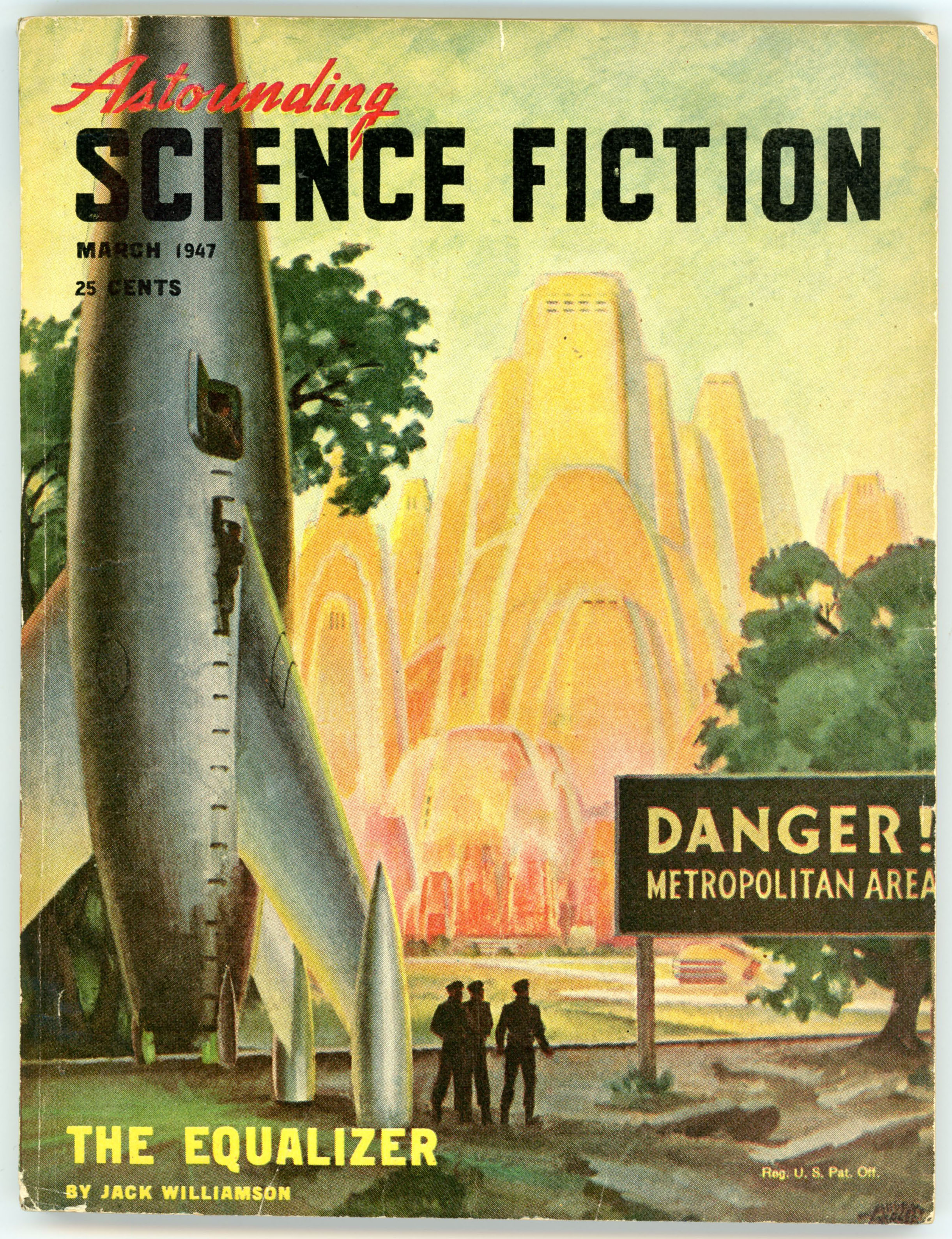 The flying car / spacecraft (I haven’t yet read Heinlein’s story!) is also interesting. (Note Rogers’ initials on the door!) The vehicle combines the streamlined shape of a rocket with retractable landing gear reminiscent of an aircraft. Something about this craft is reminiscent of Bell Aircraft’s YFM-1 Aircuda of the late 30s – early 40s….
The flying car / spacecraft (I haven’t yet read Heinlein’s story!) is also interesting. (Note Rogers’ initials on the door!) The vehicle combines the streamlined shape of a rocket with retractable landing gear reminiscent of an aircraft. Something about this craft is reminiscent of Bell Aircraft’s YFM-1 Aircuda of the late 30s – early 40s….
______________________________
Illustration by Hubert Rogers, for Robert A. Heinlein’s (as Anson MacDonald) story “Beyond This Horizon -” (p. 80)

